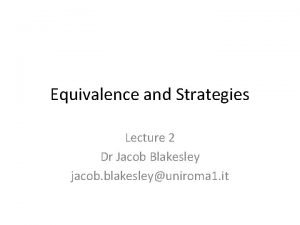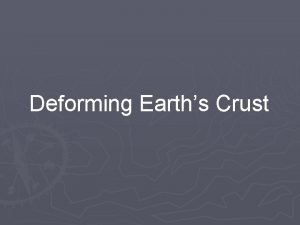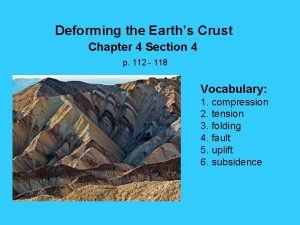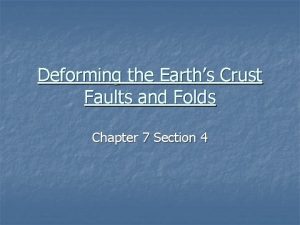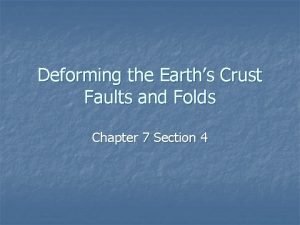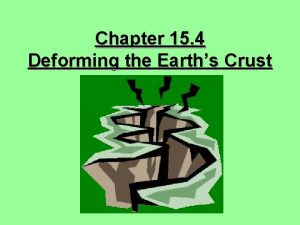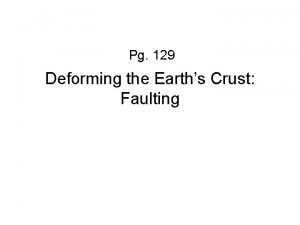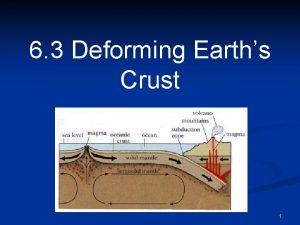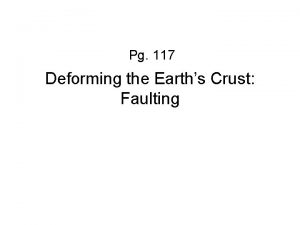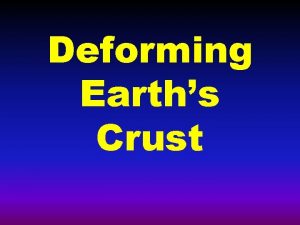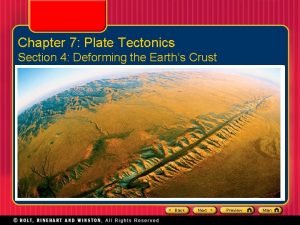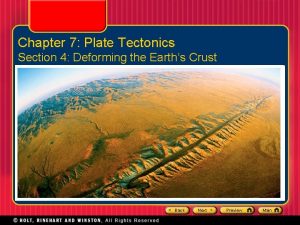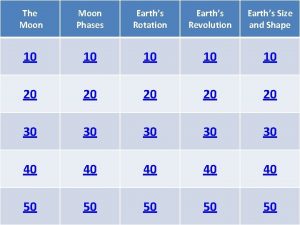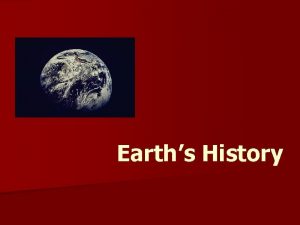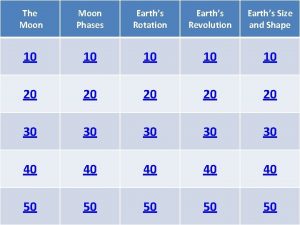Chapter F 4 Section 4 Deforming the Earths


















- Slides: 18

Chapter F 4 Section 4 Deforming the Earth’s Crust Deformation • Whether a material bends or breaks depends on the how much stress is applied to the material. • Stress is the amount of force per unit area on a given material. • Different things happen to rock when different types of stress are applied. Chapter menu Resources Copyright © by Holt, Rinehart and Winston. All rights reserved.

Chapter F 4 Section 4 Deforming the Earth’s Crust Deformation, continued • The process by which the shape of a rock changes because of stress is called deformation. • Rock layers bend when stress is placed on them. • When enough stress is placed on rocks, they can reach their elastic limit and break. Chapter menu Resources Copyright © by Holt, Rinehart and Winston. All rights reserved.

Chapter F 4 Section 4 Deforming the Earth’s Crust Deformation, continued • The type of stress that occurs when an object is squeezed, such as when two tectonic plates collide, is called compression. • When compression occurs at a convergent boundary, large mountain ranges can form. Chapter menu Resources Copyright © by Holt, Rinehart and Winston. All rights reserved.

Chapter F 4 Section 4 Deforming the Earth’s Crust Deformation, continued • Tension is stress that occurs when forces act to stretch an object. • Tension occurs at divergent plate boundaries, such as mid-ocean ridges, when two tectonic plates pull away from each other. Chapter menu Resources Copyright © by Holt, Rinehart and Winston. All rights reserved.

Chapter F 4 Section 4 Deforming the Earth’s Crust Folding • The bending of rock layers because of stress in the Earth’s crust is called folding. • Types of Folds Depending on how rock layers deform, different types of folds are made. • The major types of folds are anticlines, synclines, and monoclines. Chapter menu Resources Copyright © by Holt, Rinehart and Winston. All rights reserved.

Chapter F 4 Section 4 Deforming the Earth’s Crust Folding, continued • Anticlines are upward-arching folds. • Synclines are downward, troughlike folds. Chapter menu Resources Copyright © by Holt, Rinehart and Winston. All rights reserved.

Chapter F 4 Section 4 Deforming the Earth’s Crust Folding, continued • In a monocline, rock layers are folded so that both ends of the fold are horizontal. Chapter menu Resources Copyright © by Holt, Rinehart and Winston. All rights reserved.

Chapter F 4 Section 4 Deforming the Earth’s Crust Faulting • Some rock layers break when stress is applied. The surface along which rocks break and slide past each other is called a fault. • The blocks of crust on each side of the fault are called fault blocks. Chapter menu Resources Copyright © by Holt, Rinehart and Winston. All rights reserved.

Chapter F 4 Section 4 Deforming the Earth’s Crust Faulting, continued • When a fault is not vertical, its two sides are either a hanging wall or a footwall. Chapter menu Resources Copyright © by Holt, Rinehart and Winston. All rights reserved.

Chapter F 4 Section 4 Deforming the Earth’s Crust Faulting, continued • The type of fault depends on how the hanging wall and footwall move in relationship to each other. • When a normal fault moves, it causes the hanging wall to move down relative to the footwall. Chapter menu Resources Copyright © by Holt, Rinehart and Winston. All rights reserved.

Chapter F 4 Section 4 Deforming the Earth’s Crust Faulting, continued • When a reverse fault moves, it causes the hanging wall to move up relative to the footwall. Chapter menu Resources Copyright © by Holt, Rinehart and Winston. All rights reserved.

Chapter F 4 Section 4 Deforming the Earth’s Crust Faulting, continued • A third major type of fault is a strike-slip fault. These faults form when opposing forces cause rock to break and move horizontally. Chapter menu Resources Copyright © by Holt, Rinehart and Winston. All rights reserved.

Chapter F 4 Section 4 Deforming the Earth’s Crust Plate Tectonics and Mountain Building • When tectonic plates collide, land features that start as folds and faults can eventually become large mountain ranges. • When tectonic plates undergo compressions or tension, they can form mountains in several ways. Chapter menu Resources Copyright © by Holt, Rinehart and Winston. All rights reserved.

Chapter F 4 Section 4 Deforming the Earth’s Crust Mountain Building, continued • Folded Mountains form when rock layers are squeezed together and pushed upward. • Fault-Block Mountains form when large blocks of the Earth’s crust drop down relative to other blocks. • Volcanic Mountains form when magma rises to the Earth’s surface and erupts. Chapter menu Resources Copyright © by Holt, Rinehart and Winston. All rights reserved.

Chapter F 4 Section 4 Deforming the Earth’s Crust Uplift and Subsidence • Vertical movements in the crust are divided into two types—uplift and subsidence. • Uplift is the rising of regions of the Earth’s crust to higher elevations. • Subsidence is the sinking of regions of the Earth’s crust to lower elevations. Chapter menu Resources Copyright © by Holt, Rinehart and Winston. All rights reserved.

Chapter F 4 Section 4 Deforming the Earth’s Crust Uplift and Subsidence, continued • Uplifting of Depressed Rocks Uplift can occur when large areas of land rise without deforming. • One way areas rise without deforming is process known as rebound. When the crust rebounds, it slowly springs back to its previous elevation. Chapter menu Resources Copyright © by Holt, Rinehart and Winston. All rights reserved.

Chapter F 4 Section 4 Deforming the Earth’s Crust Uplift and Subsidence, continued • Subsidence of Cooler Rocks that are hot take up more space than cooler rocks. • The lithosphere is relatively hot at mid-ocean ridges, but cools as it moves farther from the ridge. • As it cools, the oceanic lithosphere takes up less volume and the ocean floor subsides. Chapter menu Resources Copyright © by Holt, Rinehart and Winston. All rights reserved.

Chapter F 4 Section 4 Deforming the Earth’s Crust Uplift and Subsidence, continued • Tectonic Letdown Subsidence can also occur when the lithosphere becomes stretched in rift zones. • A rift zone is a set of deep cracks that forms between two tectonic plates that are pulling away from each other. • As tectonic plates pull apart, stress between the plates causes a series of faults to form along the rift zone. Chapter menu Resources Copyright © by Holt, Rinehart and Winston. All rights reserved.
 Berman 12 deforming tendencies
Berman 12 deforming tendencies The earths layers foldable
The earths layers foldable Earths roation
Earths roation Whats a natural satellite
Whats a natural satellite What makes one biome different from another?
What makes one biome different from another? Most abundant element in earth's crust
Most abundant element in earth's crust Plasticity in earth's layers
Plasticity in earth's layers Whats earths moon called
Whats earths moon called Earth's thickest layer
Earth's thickest layer Earths early atmosphere contained
Earths early atmosphere contained Lithosphere
Lithosphere Earths major crustal plates
Earths major crustal plates Earths orbit seasons
Earths orbit seasons Brown earth soil profile
Brown earth soil profile Earths physical features
Earths physical features Earths honey
Earths honey Whats the name of earths moon
Whats the name of earths moon Continental drift theory notes
Continental drift theory notes Earths crust
Earths crust
